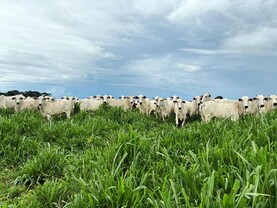Last week’s front page in the Irish Farmers Journal put the spotlight on the value of beef produced on Irish farms compared with our neighbours in Britain and Northern Ireland.
The distance between Belcoo in Co Fermanagh and Blacklion in Co Cavan is the breadth of the Belcoo River, but the gap in the value of a steer born on the Northern Ireland bank of that river is €300 more compared with its counterpart born on the southern bank.
In 2007, McKinsey produced a report on beef production in Northern Ireland that suggested it wasn’t viable for farmers to continue production without a dramatic increase in farm gate prices.
The same organisation produced a report for Enterprise Ireland a number of years earlier, recommending major rationalisation in beef processing in the Republic of Ireland in a coordinated way.
This was subsequently ruled as being anti-competitive, though rationalisation has certainly happened subsequently with the Competition and Consumer Protection Commission’s (CCPC) blessing, as it was a product of market forces as opposed to a co-ordinated plan.
Market reality
What is the relevance of what are now historical reports for Irish beef producers in 2023? Most obviously, it’s that farm gate beef prices in the North have diverged by a significant amount over a long period of time.
It is debatable if northern prices are still adequate, but they are in a much better place than south of the border. It is not just Britain and Northern Ireland that Irish cattle price lags behind.
Looking at the Bord Bia export benchmark graph, we can see that for week ending 30 September, the Irish prime beef average price was 36c/kg below what was paid in the countries Irish beef is exported to.
It is clear that, despite the best efforts of Bord Bia and processors, the market value of Irish beef remains somewhere between the exceptionally low values in South America and the more recent Australia and UK/EU prices.
These prices are the market reality for Irish beef, and the harsh reality for many producers
Analysis of Irish beef price over time shows that it is only when cattle numbers for slaughter are scarce that prices move towards or even above the Bord Bia export benchmark price and close the gap with prices paid in Britain and Northern Ireland.
For the week ending 24 September, the official Irish reported price for an R3 steer was €4.66/kg excluding VAT (€4.92/kg with VAT).
The highest price ever reported for Irish R3 steers was €5.32/kg (excluding VAT) paid for cattle in the week ending 4 June 2022, falling sharply in subsequent weeks as cattle supply off grass increased.
Teagasc analysis
These prices are the market reality for Irish beef, and the harsh reality for many producers is that they often don’t meet production costs, never mind leave a wage to pay for labour.
In their budget for winter finishing 2023/24, Teagasc calculates that winter finishers this year need a selling price between €5.66/kg and €5.94/kg on a Continental-cross steer, just to break even.
How likely is the Irish factory price to reach and sustain that level in the first half of 2024, never mind adding a value for labour?
The Teagasc National Farm Income Survey (NFIS) has also been grim reading for Irish beef producers for several years. The data for 2022, which was considered a good year, shows the average cattle rearing farm being at €9,400, despite having received direct payments of €14,300.
In other words, the average farm was using almost €5,000 from their direct support payments to subsidise the production side of their farm business!
Despite Bord Bia having done their best to promote Irish beef in international markets, the reality is that, for several years, the market value for Irish beef returned to farmers has failed to deliver an income in most cases.
In fact, the average Irish cattle-rearing farm in 2022 would have been €4,900 better off if they had just captured the direct payment and forgot about farming.
There is also little evidence of anything coming down the track that will give Irish beef prices a substantial and sustained uplift.
Irish farmers would need close to the British price to have a chance of viability, yet the likelihood of that happening is low, especially as Australia will be increasingly competitive in that market for imported beef.
With just 14% of suckler farms deemed viable in the Teagasc NIFS and one third vulnerable, has the time come for some farmers to think the unthinkable and stop, or at least greatly reduce, production?
That would also conveniently assist the delivery of the Government’s emissions reduction target for agriculture.
The suckler cow herd is already in decline, and this is likely to continue amid the current policy of shifting farmer supports away from production.






 This is a subscriber-only article
This is a subscriber-only article










SHARING OPTIONS: